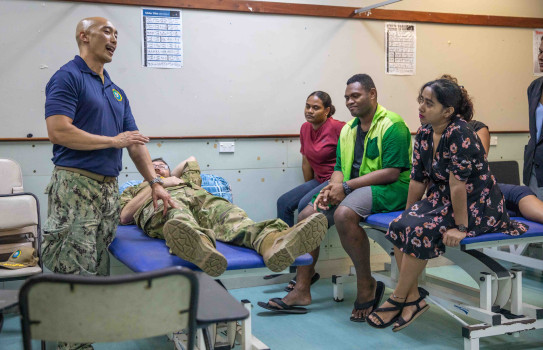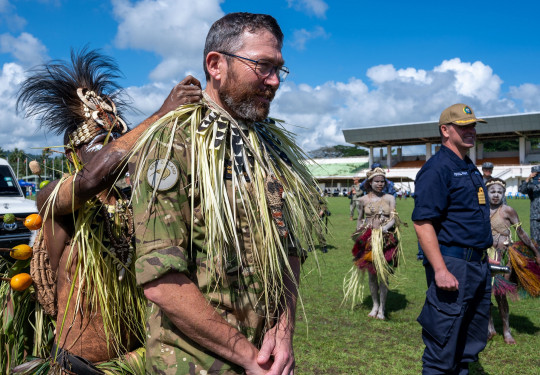Mammoth Indo-Pacific disaster exercise highlights countries' similarities: NZ Navy Captain
The last of the Kiwi contingent has wrapped up its involvement in a mammoth four-month, eight-nation exercise aimed at preparing Indo-Pacific countries for a large-scale natural disaster.
08 December, 2023
Ten New Zealand Defence Force (NZDF) personnel were taking part in Exercise Pacific Partnership, which included medical, engineering, Humanitarian Assistance and Disaster Relief (HADR), public health and community outreach projects.
They joined dock landing ship USS Pearl Harbor at various stages during the exercise, which started in August, providing expertise in planning, coordination, chaplaincy, physiotherapy, cultural advice, rehabilitation and physical training.
Ex Pacific Partnership was developed 18 years ago as a way to improve on the disjointed HADR response to the 2004 Indonesian earthquake and tsunami. It’s the largest annual multinational HADR preparedness mission conducted in the Pacific.
The New Zealanders were among more than 1500 personnel from the United States, Australia, Canada, Chile, Japan, Republic of Korea, and the United Kingdom taking part.
Host nations included Vietnam, Philippines, Malaysia, Palau, Samoa, Papua New Guinea, Fiji and Tonga.
Four ships from three different navies were involved and personnel were flown into some of the more remote mission stops like Palau and Papua New Guinea.
Royal New Zealand Navy Captain Jon Beadsmoore held the role of Multinational Operations Coordination Cell director for the duration of the exercise, coordinating the participation of international personnel joining the mission.
“It was a busy role, with a large number of personnel movements as people surged in and out of the exercise,” he said.

The US Navy’s Lieutenant Commander Yui Wong demonstrates physical therapy on Royal New Zealand Navy Captain John Beadsmoore to students of Fiji National University (Photo credit: US Navy Mass Communication Specialist 2nd Class Megan Alexander)
It was a complex exercise and Captain Beadsmoore said the behind-the-scenes co-ordination of all the participants was a great challenge.
“It’s worth it to see the positive effects the mission has on the communities in each country we’ve been able to visit. The teamwork that is generated amongst all the partner nation staff and the host nation personnel contribute to the success of the mission.”
It was hard to pick out a specific highlight from the exercise, Captain Beadsmoore said.
“But for me personally it has been the friendships generated, paths crossed and connections made with a host of different people from a wide range of cultures that has left the biggest impression.
“What’s more it is the similarities that we all share rather than the differences, that have stood out.”
The 2023 exercise was led by United States Navy Captain Claudine Caluori, Commander of Destroyer Squadron Thirty One (CDS 31). The ships involved were the Harpers-Ferry class dock landing ship USS Pearl Harbor, the Independence-class littoral combat ship USS Jackson and Republic of Korea Tank Landing Ship Cheon Ja Bong also participated.
Cover image: Captain Jon Beadsmoore receives a ceremonial Papua New Guinea necklace before the start of Wewak Women’s Networking Event (Photo credit: US Navy Ensign Madison Kwok)
